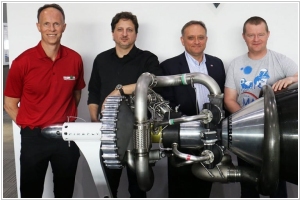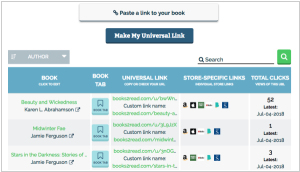3 Best books on Moon Exploration
September 05, 2025 | Author: Maria Lin
Here is may list of 3 most interesting non-fiction books about Moon exploration:
1. One Giant Leap: The Impossible Mission That Flew Us to the Moon
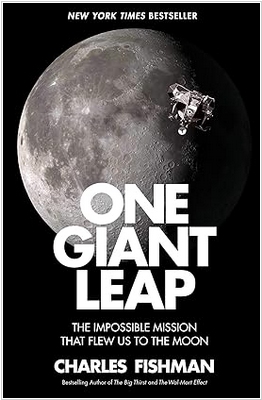
This book gives an interesting look at the details of the Apollo project. The Moon race of the 1960s was as revolutionary as any other affair of that decade. It was the largest civilian project ever undertaken, dwarfing even the Manhattan More Americans were working on the Moon mission than were fighting in Vietnam. In 1964, 380,000 people were already working on Apollo and only 23,300 were in Vietnam. The scale of NASA's effort in the 1960s was enormous, even compared to the corporate giants of the era. NASA and Apollo had more employees and contractors than any Fortune 500 company - it was bigger than Ford, GE and U.S. Steel. Apollo was an engineering and technology effort; it didn’t require the scientific breakthroughs of the Manhattan Project, but it did have to create everything from scratch. MIT was responsible for designing the Apollo computers, writing their software and then overseeing the building of the computers, installing the software and training the astronauts. At MIT alone, there were 700 people writing programs for two computers for 11 missions—and that doesn’t include the people who actually built the computers, gyroscopes and navigation instruments at supplier plants. Part of the genius of Apollo, part of its achievement, was its project management. In a sense, NASA had to invent modern large-project management while also overseeing the invention and refinement of technology for something that had never been done before—all within an agency that was only three years old and had little track record when Kennedy set out to get to the moon.
2. How We Got to the Moon: The People, Technology and Daring Feats of Science Behind Humanity's Greatest Adventure
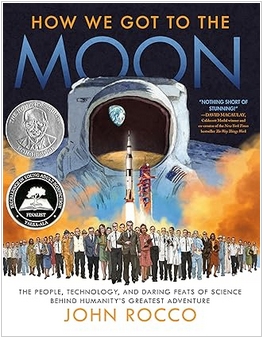
This beautifully illustrated book by John Rocco explores the Apollo missions. He says the Apollo is the perfect story to showcase science problem solving by young minds. As the son of a scientist, he wanted to understand and explain to readers how each part of the Apollo/Saturn system worked and how it was built. He wanted people to remember some of the little-known heroes who helped make the mission possible and show how they solved problems step by step using the basic building blocks of science and pure ingenuity. If John couldn't figure something out, he met the engineers who designed the components. Moreover, he drew all the illustrations for this book himself from scratch. Although almost every aspect of the Apollo program is documented with photographs, drawings and diagrams, that is dull technical documentation and John wanted to make the book more appealing to readers. By creating the images himself, he was able to control and select the information, leaving just enough for understanding without overloading it with unnecessary details. Many of the illustrations are based on historical photographs and NASA drawings, most of which are in black and white and the research helped the author establish the true colors of some objects. The result is a book that can be read by both children and adults.
3. The Moon: A History for the Future
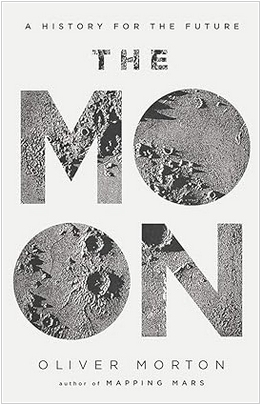
This book not only tells the history of the journey to the Moon, but also looks for reasons for the return. One of the main reasons is Helium-3, an isotope that is in some ways is the perfect fuel for fusion reactors and is extremely rare on Earth. Nuclear fusion produces energy by reacting deuterium, a stable isotope of hydrogen (which is easily isolated from seawater) with helium-3. Helium-3 is non-radioactive and with a suitable reactor, it would take only 100 kilograms of it per year to produce the same amount of gigawatts of power as one of O'Neill's 16,000-ton solar satellites. Only a few hundred tons of the substance per year would be needed to meet all of Earth's current electricity needs. To obtain these 100 kg of helium-3, it would be necessary to process tens of millions of tons of lunar regolith, which is not much easier than throwing thousands of tons of the substance into space to be melted down and turned into satellites. The idea of mining helium-3 has, understandably, been enthusiastically embraced by proponents of the "five" theory and science fiction writers. It was the basis for Ian Macdonald's films New Moon (2016) and Wolf Moon (2018), as well as Duncan Jones's Moon (2012).
See also: Top 10 eBook Organizers
1. One Giant Leap: The Impossible Mission That Flew Us to the Moon

This book gives an interesting look at the details of the Apollo project. The Moon race of the 1960s was as revolutionary as any other affair of that decade. It was the largest civilian project ever undertaken, dwarfing even the Manhattan More Americans were working on the Moon mission than were fighting in Vietnam. In 1964, 380,000 people were already working on Apollo and only 23,300 were in Vietnam. The scale of NASA's effort in the 1960s was enormous, even compared to the corporate giants of the era. NASA and Apollo had more employees and contractors than any Fortune 500 company - it was bigger than Ford, GE and U.S. Steel. Apollo was an engineering and technology effort; it didn’t require the scientific breakthroughs of the Manhattan Project, but it did have to create everything from scratch. MIT was responsible for designing the Apollo computers, writing their software and then overseeing the building of the computers, installing the software and training the astronauts. At MIT alone, there were 700 people writing programs for two computers for 11 missions—and that doesn’t include the people who actually built the computers, gyroscopes and navigation instruments at supplier plants. Part of the genius of Apollo, part of its achievement, was its project management. In a sense, NASA had to invent modern large-project management while also overseeing the invention and refinement of technology for something that had never been done before—all within an agency that was only three years old and had little track record when Kennedy set out to get to the moon.
2. How We Got to the Moon: The People, Technology and Daring Feats of Science Behind Humanity's Greatest Adventure

This beautifully illustrated book by John Rocco explores the Apollo missions. He says the Apollo is the perfect story to showcase science problem solving by young minds. As the son of a scientist, he wanted to understand and explain to readers how each part of the Apollo/Saturn system worked and how it was built. He wanted people to remember some of the little-known heroes who helped make the mission possible and show how they solved problems step by step using the basic building blocks of science and pure ingenuity. If John couldn't figure something out, he met the engineers who designed the components. Moreover, he drew all the illustrations for this book himself from scratch. Although almost every aspect of the Apollo program is documented with photographs, drawings and diagrams, that is dull technical documentation and John wanted to make the book more appealing to readers. By creating the images himself, he was able to control and select the information, leaving just enough for understanding without overloading it with unnecessary details. Many of the illustrations are based on historical photographs and NASA drawings, most of which are in black and white and the research helped the author establish the true colors of some objects. The result is a book that can be read by both children and adults.
3. The Moon: A History for the Future

This book not only tells the history of the journey to the Moon, but also looks for reasons for the return. One of the main reasons is Helium-3, an isotope that is in some ways is the perfect fuel for fusion reactors and is extremely rare on Earth. Nuclear fusion produces energy by reacting deuterium, a stable isotope of hydrogen (which is easily isolated from seawater) with helium-3. Helium-3 is non-radioactive and with a suitable reactor, it would take only 100 kilograms of it per year to produce the same amount of gigawatts of power as one of O'Neill's 16,000-ton solar satellites. Only a few hundred tons of the substance per year would be needed to meet all of Earth's current electricity needs. To obtain these 100 kg of helium-3, it would be necessary to process tens of millions of tons of lunar regolith, which is not much easier than throwing thousands of tons of the substance into space to be melted down and turned into satellites. The idea of mining helium-3 has, understandably, been enthusiastically embraced by proponents of the "five" theory and science fiction writers. It was the basis for Ian Macdonald's films New Moon (2016) and Wolf Moon (2018), as well as Duncan Jones's Moon (2012).
See also: Top 10 eBook Organizers

